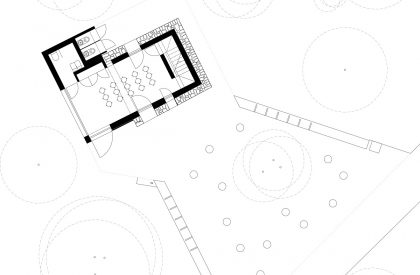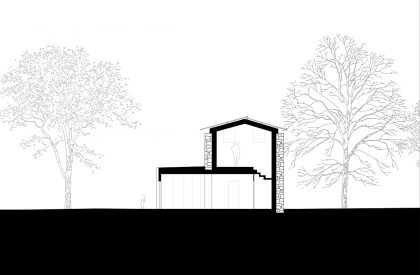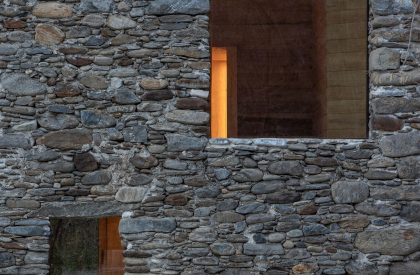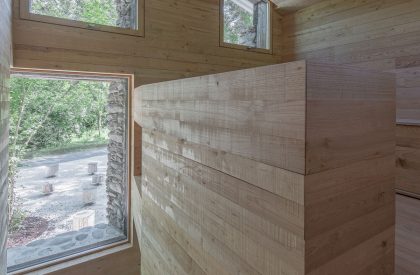Excerpt: The Kingfisher’s Nest, designed by Marco Ghilotti Architetto, involves the transformation and expansion of the rural building originally used as a stable and barn into an educational classroom along the Valtellina path: a cycle-pedestrian itinerary that winds along the entire valley. The small extension was made of prefabricated wood panels, was insulated and clad with burnt larch wood planks. The intervention aims to safeguard the simple architecture of the building by inserting a new wooden shell inside the volume, defined by the stone walls.
Project Description
[Text as submitted by architect] The existing building is located on the island of Pescaia, along the valley floor of the Adda river between the towns of Traona and Cosio Valtellino in the Province of Sondrio. The project involves the transformation and expansion of the rural building originally used as a stable and barn into an educational classroom along the Valtellina path: a cycle-pedestrian itinerary that winds along the entire valley. The intervention aims to safeguard the simple architecture of the building by inserting a new wooden shell inside the volume, defined by the stone walls.


On the ground floor, the larger dimensions required for the teaching room determine the extension. This is solved with a simple volume in blackened wood in material and a chromatic counterpoint with the stones of the barn.
A large glazed opening, similar in size to the internal hall, offers an unprecedented look at the dense forest surrounding the building. The relationship between the planned volume and the nearby cycle-pedestrian path is instead resolved by arranging a simple public space in white concrete, delimited by two seats in solid wood. Inside this rediscovered meeting place, in the shade of an existing hazelnut tree, some cylindrical seats in solid wood offer a play area for the little ones.


The pre-existing stone building has been restored. The original stone wall has been cleaned and consolidated.
The small extension was made of prefabricated wood panels, was insulated and clad with burnt larch wood planks. The black color of the wood wants to enhance the stone texture and the colors of nature in the different seasons.


























